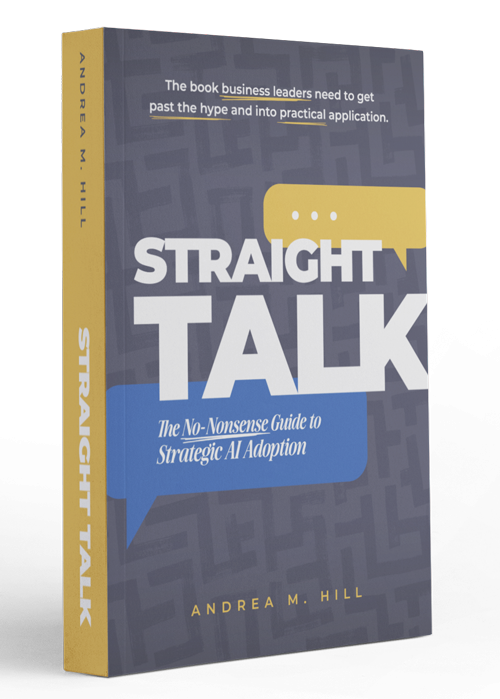The Power of Stories for Good Copywriting

Why We Need Storytelling in Content Marketing
A new jewelry designer is looking to establish his web presence. He researches the keywords that are ranking for jewelry businesses and writes a series of blog posts around those keywords. After all, you don’t want to reinvent the wheel with content marketing. You know what works, and you’ve got to give the people (and the Google web crawlers) what they want. But despite his best efforts, page views aren’t converting into sales. What’s wrong?
The problem is that the jewelry designer’s content is just that: content, stuff to put in the container of a web page. There’s nothing there to hook a reader, to connect them to the brand in a visceral way. There’s nothing demonstrating exactly how this designer’s pieces are going to fill a particular kind of customer’s needs. In short, there’s no story.
Relationships between retailers and customers, and even between B2B organizations and their clients, are all about customer experience. Customer experience must be a priority at all levels of the customer journey. How does content marketing play a part in that? It helps consumers discover your business, it shows them how your business can solve their problems, and it plays a part in a customer ultimately choosing to do business with you.
If your content marketing—your blogs, social media, marketing emails, etc.—are too bland, boring, or unfocused for the average consumer to bother reading, you’re not providing a great customer experience. The same goes for content that is well-written but focused on the wrong things. Incorporating storytelling into your content marketing helps you keep your customers and their needs at the center of your efforts.
The Elements of Story
Most stories include at least three elements: character, conflict, and plot. Those aren’t the only three elements of storytelling, but they are the most important to us.
Character
A story really only needs one character: a main character, a protagonist. Many businesses err in making themselves the protagonist of whatever story they are telling. Our jewelry designer above might have taken our advice about stories to heart and produced some copy with this message: “I had this idea for a great line of jewelry, and while I had to balance my artistic ambitions with my day job and family, I was able to turn a passion into a successful business.”
It is a story, at least. We’ve got a character (the designer), a conflict (balancing a passion project with responsibilities), and a plot (moving from business idea through the conflict that held him back to a resolution in the creation of a successful business). But it’s the wrong story. Most consumers will look at that and say, “good for you, but what can you do for me?”
That’s why we make the customer the protagonist of every story we tell, whether it’s in a blog post for a retail brand or a case study for a B2B organization. Your product or service will feature in your stories as something that ultimately helps the protagonist, but it is the protagonist’s conflict that will take center stage.
Conflict
Conflict moves stories. Without conflict, stories are static. Nothing moves, no one grows, no one discovers what they are capable of, no one solves any problems. Conflict provides the friction in the life of our protagonist—the consumer—that moves them to discover you. Before a purchase, there’s conflict. I’m missing something from my life. I need to buy the perfect anniversary gift. I want to express myself through style, but I’m not sure which ring is the right one for me. What’s the difference between 18k and 24k gold, anyway?
Your role in resolving the conflict is as a supporting character. You are the Gandalf to the consumer’s Frodo, if you will (since we’re on the subject of rings). You are the protagonist’s guide through conflict to a happy ending: a long and rewarding relationship with your business.
Plot
“Plot” and “story” aren’t synonymous. “Plot” refers to the sequence of events in a story, whereas “story” encompasses character, setting, theme, point of view, and all the other elements of story. Almost every book or movie is a variation of one of a handful of plots. Since it encompasses a series of events, plot is typically executed within a storytelling structure. One popular plot structure is the hero’s journey. It looks something like this:
1. An average person is roused from their normal life to go on some sort of adventure and become a hero.
2. The hero might try to avoid this call to adventure, or they might throw themselves into it.
3. With the help of a mentor figure, the hero leaves their everyday life to enter a wondrous new world.
4. The hero faces all sorts of challenges along the way, but they overcome these challenges with the help of their allies and the helpful objects or weapons they’ve picked up along the way.
5. The hero returns home with some new knowledge or power.
The hero’s journey isn’t the only popular storytelling structure, but it’s useful to us for the ways in which it mirrors the customer journey:
1. A customer realizes they have a problem that they need to solve.
2. The customer sets out to solve their problem: they go online, they do research, they read reviews, they check out different stores. They might find themselves overwhelmed by information and feeling more helpless and confused than when they started.
3. With the help of their allies (friends, family, trusted influencers, salespeople, articles), they overcome these challenges and make a decision.
4. The customer returns home with a solution to their initial problem.
In the discovery stage, you are the mentor figure, educating the hero and equipping them to make the best choice. In the consideration stage, you are the ally or the magic talisman that helps clear away obstacles. In the decision stage, you are there to keep the hero on track and resolute in the knowledge that they are doing the right thing.
What About B2B Content?
Emotional connection and authenticity sounds great for retailers, but will this do anything for B2B buyers, who are known for being more rational, deliberative, and data-driven? It’s true that an evidence-based case for your business will move B2B decision-makers, who have a lot at stake in making the right decision. At the same time, that data can be much more effective and illustrative when delivered in the form of a story. This is exactly what case studies do. You can learn more about applying storytelling strategies to your case studies here.
The Power of Stories
Stories make connections. Connections build trust. Trust creates loyalty. You don’t need stories to sell products, but they go a long way in helping consumers not only buy products but to create an identity around them.
Stories might also be better for SEO than broader, more plainly informative blog posts. Why does AI writing seem so bland and unsatisfying? Because it is often vague, abstract, devoid of style, and doesn’t tell a good story. Above all, it’s not authentic.
Every good work of fiction is true, in some sense: it tells a truth about humanity, society, relationships, or emotions, often a truth that cannot be related in a dry, straightforward, emotionally detached, or abstract manner. A good story, whether fiction or nonfiction, is an authentic expression.
Stories are entertaining because they move. They’re not just static information; they are changing and dynamic. We get to see something transform before our eyes. Readers get swept up in the movement and want to know what happens next. That movement will keep eyes on the page, while the emotional connection fostered by storytelling will help convert those eyes into sales.
Andrea Hill's
Latest Book
Straight Talk
The No-Nonsense Guide to Strategic AI Adoption

Where other books focus on prompts and tools, this book gives business leaders what they actually need: the frameworks and confidence to lead AI adoption responsibly, without having to become technologists themselves.
Also available at independent booksellers and public libraries.
Are You Ready to Do Better Marketing?
WerxMarketing is all about performance marketing. That means giving you the tools you need to connect with customers, enable your sales efforts, and turn leads into loyal customers. Ready to learn more about how we do that? Book a free consult and bring your questions. See if you like working with us on our dime, and get some good advice in the process.